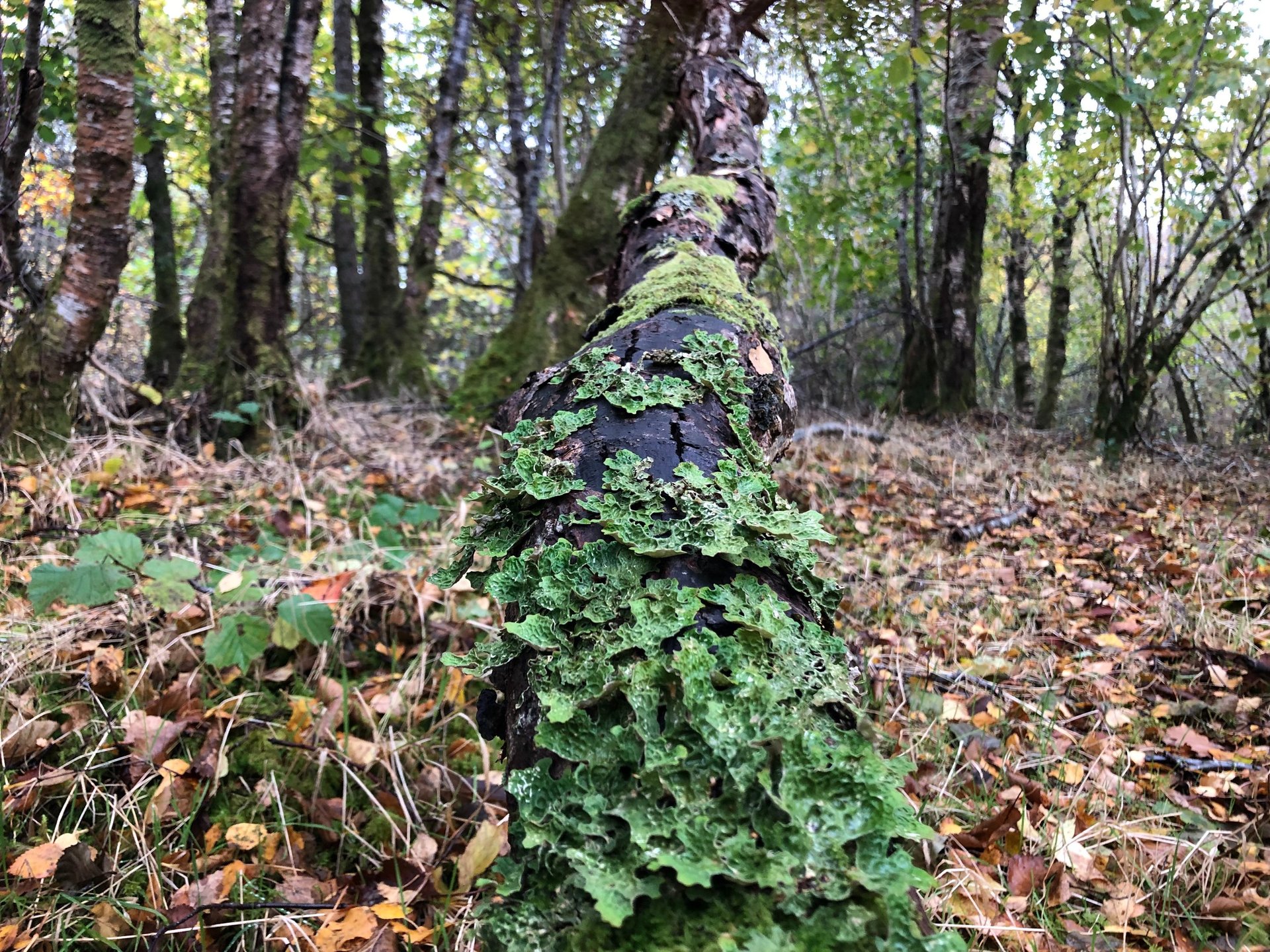
Atlantic Rainforest
Temperate rainforests are an important habitat supporting high levels of biodiversity. The characteristic rich pteridophyte, lichen and bryophytes communities of temperate rainforest are particularly significant with few parallels anywhere else in the world.
Globally, temperate rainforest has a restricted distribution, with some of the most important remnants occurring in the British Isles. The significance of this habitat is recognised by the abundance of Atlantic lichen and bryophyte species for which Scotland has international responsibility.
A number of useful climatic indices and indicator species have been used to define the limits of Atlantic rainforest in the British Isles; however, microclimatic factors and local variation are also important.
Even within Scotland, there is incredible variation in temperate rainforest habitat- with Atlantic hazelwoods, Western oakwoods, upland birchwoods and even Western Caledonian pinewoods supporting rainforest ecosystems.
Trees of Atlantic Rainforest
A range of tree species occur across Atlantic rainforest habitats, conveying different character, benefits and habitat diversity.
Hazel - Corylus avellana
The Atlantic hazelwoods of Scotland's west coast, particularly abundant in Argyll and Morvern, are a unique habitat home to endemic species such as Graphis alboscripta.
Oak - Quercus petraea and Quercus robur
Britain's two native oaks are perhaps the most characteristic species of temperate rainforest in Britain. The bark of mature oaks is sufficiently basic to support rich lobarion lichen communities.
Ash - Fraxinus excelsior
The basic bark of ash makes it a particularly important substrate for lichens. The widespread loss of ash due to dieback is having significant impacts for specialist epiphytic communities - non-native species such as sycamore (Acer psudoplatanus) may be able to reduce the harm caused by this decline.
Willows - Salix aurita, Salix cinerea, Salix caprea
The moderately basic bark of Salix caprea may contribute to epiphyte biodiversity in areas where ash has been lost.
Scots pine - Pinus sylvestris
In some areas, such as Beinn Eighe NNR, Scots pine form an unusual and ecologically significant coniferous rainforest habitat with downy birch, holly, rowan and juniper.
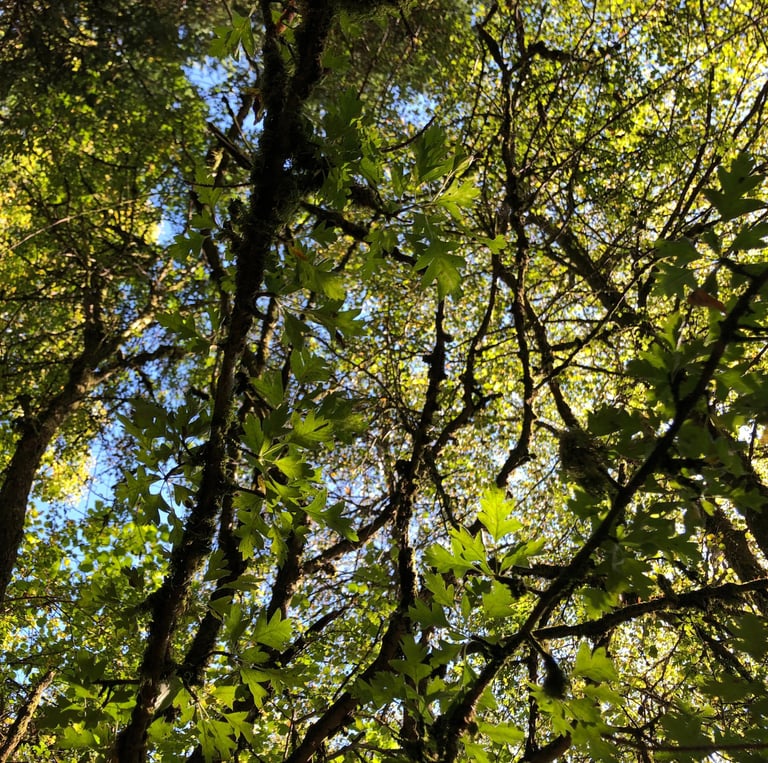

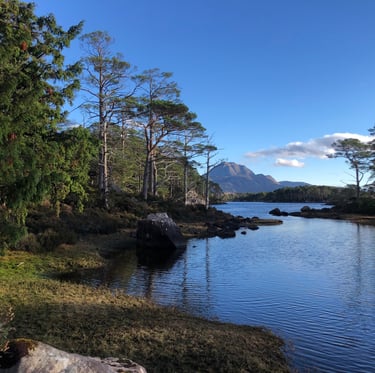

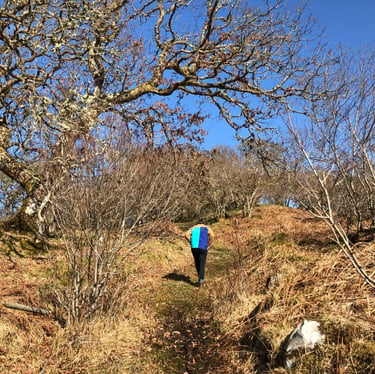


Rainforest Lichens
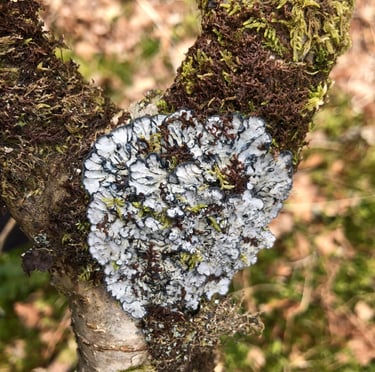

Ricasolia virens
Lichens are fascinating composite organisms consisting of a mycobiont (fungus) and a photobiont (algae or cyanobacteria)... plus many other organisms including yeasts and bacteria.
Several lichens occurring in Scotland's temperate rainforest are globally threatened on the IUCN red list and/or are speceis for whih the British Isles have international responsibility for - e.g. Lobaria virens, Pectenia cyanoloma (pictured right).
Corticolous (epiphytic) lichen communities include:
Lobarion community: a community of basic bark with Lobaria, Sticta etc. A luxuriant community dominated by Lobaria pulmonaria is pictured right.
Parmelion community: community of acidic bark, with species including Sphaerophorous globosus (named for the swollen ball-shaped apothecia) pictured right.
Graphidion community: crustose lichens occurring on smooth barked species such as hazel and holly. The crustose script lichen Fissurina alboscripta is endemic to Scotland.
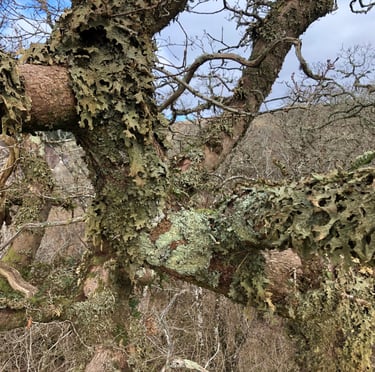

Pectenia cyanoloma
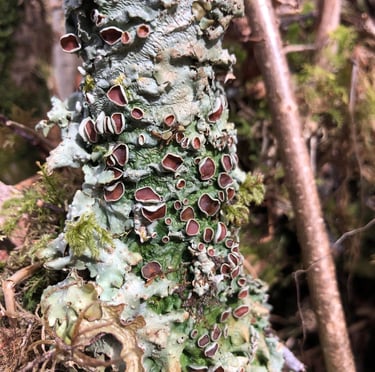

Lobaria pulmonaria
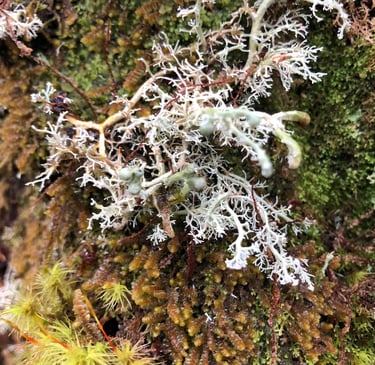

Sphaerophorous globosus

Rainforest Ferns
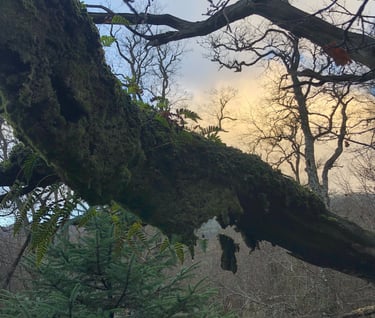

Polypodium vulgare, Trossachs
Filmy Ferns - Hymenophyllum spp.
These two inconspicuous ferns are strong rainforest indicators which grow amongst bryophyte cover on trees and rocks in oceanic areas. A useful ID feature is that the veins in Hymenophyllum wilsonii run all the way to the leaf tip, whereas they terminate significantly before in the rarer Hymenophyllum tunbrigense.
Polypody - Polypodium spp
This easily recognisable genus is not really a true "rainforest indicator" though it is more common in oceanic areas. There are three species of polypody native to Scotland. Although field characteristics can give a good indication, these are most reliably discerned by microscopic examination of the spores. The most common species in Atlantic rainforest in Scotland is Polypodium vulgare.
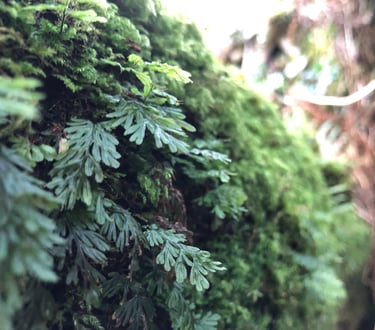

Hymenophyllum wilsonii, Loch Lomond

Woodland Floor Mosses
Thuidium tamarascinum
Many of the woodland floor mosses in Atlantic woodland are not true rainforest indicators. But they are ecologically important and once you start looking beautiful and distinctive. Here are some of our favourites to get started:
Golden tamarisk moss - Thuidium tamarascinum
Hylocomium splendens
Rhytidiadelphous spp.
Common and bank haircaps - Polytrichum commune and Polytrichastrum formosum
A widespread and easily recognisable group, distinguishing between these two species can be difficult when capsules are absent and may require microscopic examinations of leaves (BBS, 2010). Large wiry hummocks are almost ubquitously Poltytrichum commune var commune.
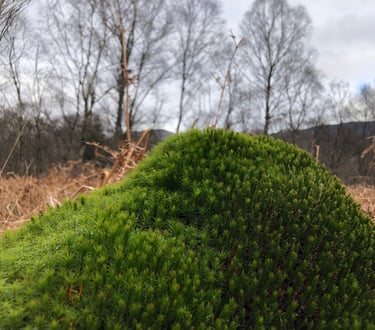

Polytrichum commune var. commune
Hylocomium splendens
Rhytidiadelphous

Rainforest Bryophytes
Bazzania trilobata
The most interesting temperate rainforest bryophytes tend tot to grow on the woodland floor, but are either epiphytes, or form mats or films on rocks.
Bazzania trilobata
A distinctive and useful rainforest indicator, the presence of Bazzania trilobata suggests good habitat for other, rarer Atlantic bryophytes.
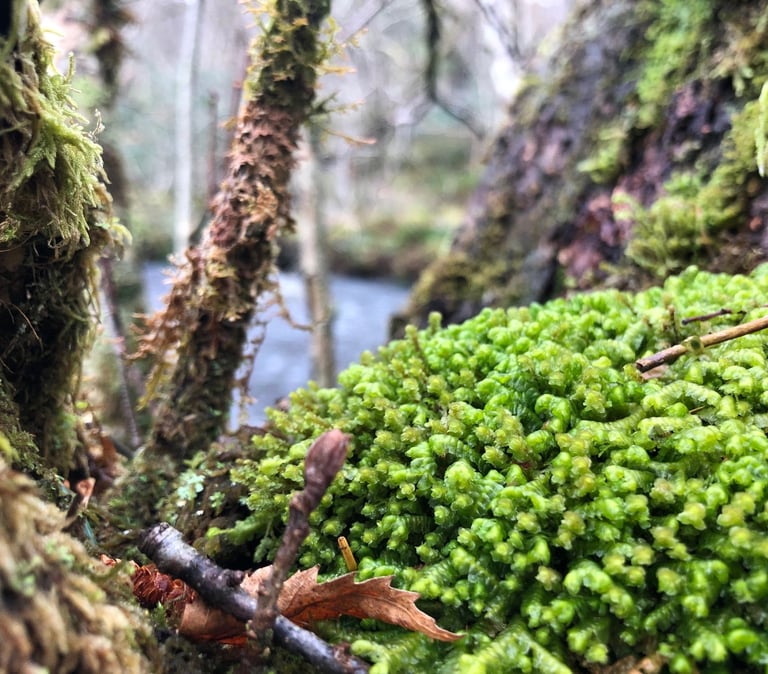


Rapid Rainforest Assessment
The Rapid Rainforest Assessment (RRA) is a methodology developed by PlantLife to assess:
The likelihood of an area of woodland supporting an important habitat for atlantic rainforest lichens, bryophytes and ferns.
The current impacts and management issues for the woodland.
Carrying out an RRA is not a substitute for commissioning a specialist survey of lichens and bryophytes, however, we will record and map important veteran trees and indicator bryophyte, lichen and pteridophyte species.
Get in touch to request an example RRA report.
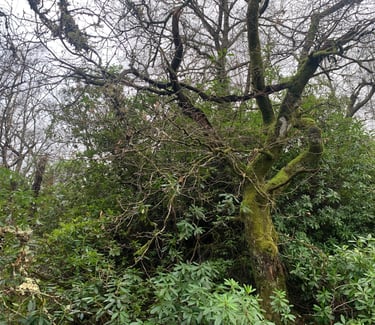




Catkin Ecology
Finding Scotland's missing habitat
CONTACT US
info@catkinecology.co.uk
+44 7918 024809
© 2025. All rights reserved.
